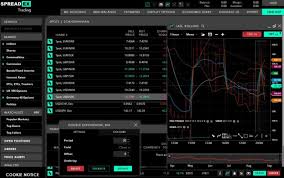If you are looking for a way to diversify your investment portfolio, trading contracts for difference (CFDs) might be the right choice for you. Unlike traditional investment vehicles, such as stocks or bonds, CFDs allow you to leverage your capital and trade on margin. This means that you can potentially earn higher returns by investing a smaller amount of money. In this blog post, we will discuss some of the advantages of CFD trading and why you should consider it as a part of your investment strategy.
Higher returns with low capital
One of the most significant advantages of CFD trading is the ability to earn higher profits with a lower initial investment. CFDs allow you to leverage your capital, which means that you can control a larger position with a smaller amount of money. For example, if you invest $500 in a CFD trade of a stock, you can potentially control a position worth $5,000. If the stock goes up by 10%, your profit would be $500, which means that you would have earned a return of 100% on your investment.
Access to global markets
CFDs allow you to invest in a wide range of markets, including stocks, commodities, forex, and indices, from all around the world. This provides you with access to a much larger pool of investment opportunities than traditional investing. With CFDs, you can trade on the movements of markets that you would not have been able to invest in otherwise.
Ability to short-sell
Another advantage of CFD trading is the ability to sell short. Short-selling is a trading strategy that involves selling an asset that you do not own, with the aim of buying it back at a lower price to make a profit. CFDs are the ideal platform for short-selling because you can profit from a falling market by selling the asset at a higher price, and then buying it back at a lower price when the market falls.
Trading flexibility
CFD trading also offers flexibility in terms of trading times. Unlike traditional investing, which is limited to specific market hours, CFDs allow you to trade 24 hours a day, five days a week. This means that you can take advantage of market movements at any time, as long as the market is open. Additionally, CFDs offer you the ability to set stop losses and take profits, which can help you limit your risk and ensure that you lock in your profits.
Low transaction costs
Compared to traditional trading, CFDs offer lower transaction costs. You do not have to pay any stamp duty or commissions when you open or close a CFD trade. Instead, you only pay the spread, which is the difference between the buy and sell price of the asset. This means that you can potentially save a lot of money on transaction costs over time.
Conclusion:
cfd trading offers several advantages over traditional investing, including the ability to earn higher profits with low capital, access to global markets, ability to short-sell, trading flexibility, and low transaction costs. However, like any investment vehicle, CFD trading also carries risks. It is important to understand the risks involved and to develop sound trading strategies to ensure that you can confidently trade CFDs. With proper risk management and a disciplined approach, CFD trading can be an effective strategy to diversify your investment portfolio and potentially earn higher returns.
